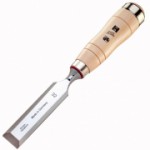There is probably no other plant that is presented in such positive, unique and diverse a light as bamboo is. For some 1.5 billion people – especially in Asia – bamboo therefore has a large ecological, economic and cultural significance.
The scope of the applications is very wide:
– Foodstuff (Sprouts)
– Construction material (House and furniture construction)
– Textiles and biomaterials (Fibers)
– Utilization of plant extracts (e.g. Bamboo milk)
– Energy usage (e.g. Pellets and activated charcoal)
- Fashion Accessories …
- Organic bicycles
- Silky soft textiles
Bamboo is as easy to process as wood. However, one must make sure to work the culms with well sharpened tools, as the exterior skin of the bamboo is extremely hard. The tool wear is therefore significantly higher than with the processing of wood. The culms are relatively easily to split lengthwise though. When drilling, on the other hand, the holes will tend to fray. A well sharpened metal drill is therefore recommended.
Bamboo culms can be cold bended shortly after the harvest. If bending occurs later, then the culms must be heated up to approx. 150 °C (302 °F) with a Bunsen burner. After cooling they will keep their bent form.
- Hacksaw
- Chisel
Bamboo culms can be dyed using different methods. The smooth, non-porous surface, however, makes the application of paint or varnish rather difficult. Guaranteed long-term coloration is achieved through chemical processes. The treatment with nitric acid achieves a brown hue, the treatment with iron (ferrous sulfate) a black coloration, while copper sulfate achieves a greenish tone. For a shiny outer surface, hot plant wax is applied, with the stalk then being polished smooth.
The culms can be best peeled when the exterior skin is still soft and green. These removed strips of fiber can be used as binding material, for example in scaffold construction or as weaving material for handicrafts. To make bamboo culms resistant against insects they can be smoked, heated up, cooked or soaked. The most widespread method of bamboo immunization uses borax. The bamboo is either placed in a dip tank or «penetrated» with the borax solution using a pressure treatment. In general, any bamboo culms used in construction should be adequately protected from moisture so that they do not become infected by fungi or insects. This is best achieved through appropriate construction planning, such as a systematic west-east orientation, sufficient roof overhangs, and a barrier against upwelling ground moisture.




